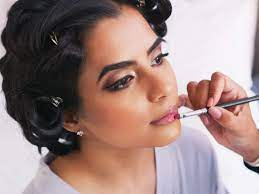
01 Mar How to Choose the Right Shade of Concealer Makeup
Choosing the right shade of concealer is key to flawless makeup. The wrong shade can ruin your entire look.
Knowing your skin tone and undertone is the key to finding the right shade. These subtle tints show through your skin tone, like blue or green veins on your hands.
Know Your Skin Tone
The right shade of concealer makeup can brighten dark circles, cover up acne blemishes, and even out skin tone to create smooth, flawless-looking skin. However, identifying your skin tone and undertones is the key to picking the best concealer color.
It’s no secret that different foundations, lipsticks, and shades of face makeup look better on people with different skin tones. Thankfully, there are a few simple things you can do to identify your skin tone and undertones that can help you choose the perfect shade of concealer makeup.
First, understand three major undertones: warm, cool, and neutral. Each has its distinct hues based on how it reacts to the sun.
If you want to find out what your undertone is, look at the color of your veins on the inside of your wrist in natural light. Green or greenish-blue veins suggest a warm undertone, while blue or purple veins indicate a cool one.
Additionally, some beauty experts believe that your hair and eye color can help you determine your undertone. Those with lighter hair and eyes tend to have a cool undertone, while those with darker hair and eyes have a warm one.
Know Your Undertones
Knowing your undertones is the key to choosing the right shade of concealer makeup. There are three main undertones: cool, warm, and neutral.
A warm undertone means your skin has a golden hue, while a cool one gives off pink and bluish hues. A neutral undertone is between these two and a mix of tones, like yellow and peach.
Fortunately, there are several ways to figure out your undertone (and how to choose the right shade of concealer makeup accordingly). The easiest way to find out is by checking your veins in natural light.
When looking at your veins, look for blue or green hues; if they appear more blue than green, you likely have a cool undertone; if they look green, you’re probably a warm one.
Once you know your undertone, you can choose from shades for foundation, bronzer, highlighter, and other complexion products. But undertones don’t stop at your face; they can also influence what colors you wear for your eyes and lips.
If you have cool undertones, try a pink-based foundation or blush. This will complement your skin’s pink, red, and bluish hints, making it glow beautifully. You can also play with shades of taupe and beige to bring your face to life.
Know Your Skin Type
Knowing your skin type is essential to choosing the right shade of concealer makeup. The most common skin types include dry, oily, and combination.
The best way to determine your skin type is by taking a simple test. First, wash your face with a gentle cleanser and pat it dry without adding moisturizers or serums. After about 25-30 minutes, observe how your skin looks and feels.
You have oily skin if your face looks greasy or has excess sebum. If your skin is flaky or itchy, you have dry skin.
Combination skin is a blend of both oily and dry areas. This skin is often prone to acne breakouts.
Finding the perfect concealer shade can be tricky, especially if you’re a beginner. But there are a few things to remember, including your skin tone and undertones.
“You want to go one or two shades lighter than your skin tone to neutralize dark areas,” says Urichuk. To find the correct shade, swipe different colors along your jawline and then use a mirror to check that it blends in perfectly.
Know Your Look
You must choose the right shade if you want your concealer to pop on your skin. It can be a little overwhelming initially because there are so many options, but finding the perfect shade is super simple once you get the hang of it.
You’ll also want to consider your undertone, which is the color of your skin beneath the surface. There are three main undertones: warm, neutral, and cool.
Undertones are often hard to pinpoint, so we recommend using a virtual concealer shade finder or swatching products in the store before buying them. Once you know your undertone, you’ll be able to find the right concealer for your skin tone every time.
Urichuk suggests choosing a concealer 1-2 shades lighter than your skin tone to hide dark spots and blemishes. This will help even out your complexion and make any dark spots or blemishes disappear completely.
Similarly, if you’re trying to cover up red areas, use a concealer that matches your natural skin tone, advises Aunique. You can also apply a green-toned color corrector or primer before your concealer, neutralizing any ruddiness on your skin.
Lastly, remember that under-eye concealer is a different shade than the rest of your face, so it’s best to go a couple of shades lighter or darker than your foundation for an even look and to brighten up your eyes. This is especially important if you have dark circles, which will help to create more of a glowing effect on your skin.

No Comments